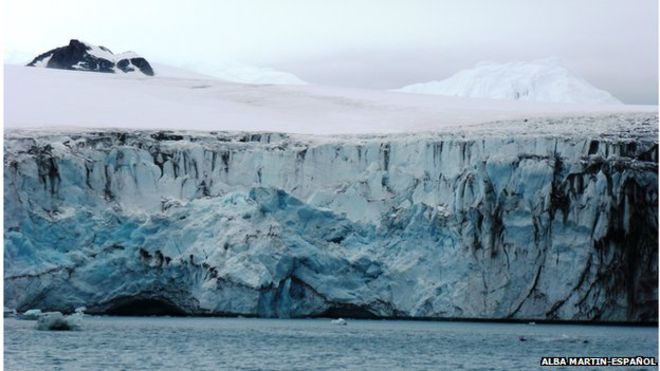
London, UK (BBN) - Temperatures in the Arctic in the last two months have hit more than 20C above normal for the time of year. Temperatures that unusual in the UK and Europe would produce 45C summers.
As a result, sea ice has shrunk to levels that scientists describe as “off the scale”, according to an editorial of The Guardian.
Mapping the changes to the extent of sea ice over the last 40 years confirms that: on a graph, the lines are clustered together like threads in a hank of silk, warming and cooling in line with each other – until this year. This year’s line drops down like a thin thread dangling into the void.
Extrapolating data from a single year must be done with caution.
When El Niño boosted global temperatures to make 1998 the hottest year on record, a position it held until 2014, deniers claimed that this showed that global warming had “paused”.
In fact, several years after 1998 came within 0.3C of the record.
The rise of a huge 20C over normal in the Arctic, the region that acts as one of the most important regulators in the global climate system, means that all expectations must now be rewritten.
Arctic snow and ice reflect heat back into space – the albedo effect.
When there is less ice, less sunlight is reflected and the sea, newly exposed, absorbs more heat, which melts more ice, and so on in a cycle.
This is of vital importance: it could represent a tipping point, beyond which the Arctic ice cap, by some projections, might soon disappear altogether in summer.
This is not the only crucial climate role the Arctic plays.
Sea and air currents swirling over and under the ice cool the globe and affect weather systems on the other side of the world, sometimes in ways that are still not fully understood.
ARCTIC SEA ICE EXTENT SHRANK TO ITS SECOND LOWEST RECORD THIS YEAR, AND IS UNUSUALLY LOW THIS WINTER
Arctic sea ice has recovered in extent from previous lows.
But that does not tell the whole story. When temperatures are less volatile, sea ice forms in layers over multiple years to a thick and solid mass.
Ice that forms under this year’s conditions is likely to be thinner and less stable than what it replaces, more vulnerable to another year’s warming and less effective as a temperature regulator.
For these reasons, the current drastic melting of the Arctic cannot be regarded merely as an outlier.
While the effects of an ice-free Arctic on global weather systems are still in the realm of known unknowns, it is a known known that they will be disruptive.
The current Arctic temperature and sea ice charts look like the beginning of a whole new trend, one that could change the global climate system for ever.
The imperative for action is therefore overwhelming. Reducing carbon dioxide is vital, and it is encouraging that annual emissions have been flat for three years.
But now it is necessary to move further, faster. Some experts advocate cutting the amount of black, unburnt carbon – soot – as a matter of urgency.
Much of this soot is borne by air currents to the Arctic, depositing it on pristine snow that turns black, and so more heat-absorbent.
Some measures to stop soot, like capping coal-fired power stations and banning agricultural burning, are relatively easy.
Others – cleaner vehicles and spreading the use of solar cookers in developing countries – might take longer.
Getting rid of potent hydrofluorocarbon gases, commonly used in refrigeration, has the broad backing of governments and industry, and will buy time.
Methane, often a byproduct of fossil fuel exploration, should be used as an energy source, or at least flared, which is less harmful.
Cutting these “short-lived climate pollutants” could prevent 0.5C of warming over the next 30 years, the research suggests.
These are opportunities that must be taken; they are necessary, though not sufficient.
So governments should also convene an Arctic council to explore other ways of protecting the region.
Driving progress demands just the kind of leadership that looks very much to have disappeared from the global scene.
Vladimir Putin’s Russia has been laying claim to vast Arctic areas, anticipating the realms of new possibility for commerce – new shipping lanes, cutting thousands of miles from current journeys – as well as oil and gas exploration that an ice-free Arctic would open up.
For Donald Trump, such an unfrozen Arctic might allow the US to control key shipping routes, and find new oilfields and gas fields.
Trump’s choice of Rex Tillerson, former head of Exxon Mobil and cheerleader for Putin, as secretary of state is deeply worrying.
Two friendly world leaders facing one an other across a vanishing Arctic ice cap.
The thawing of the cold war is no longer a metaphor.
BBN/MS/ANS